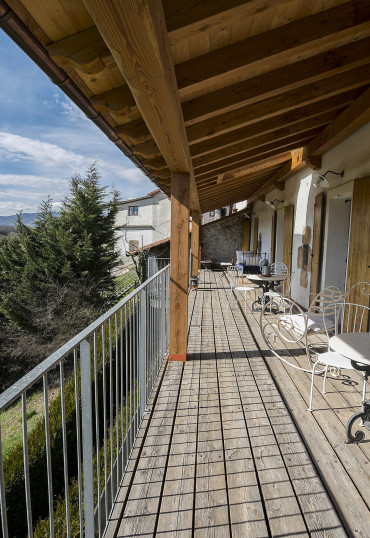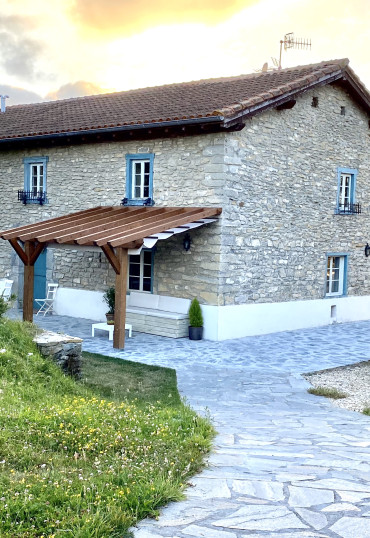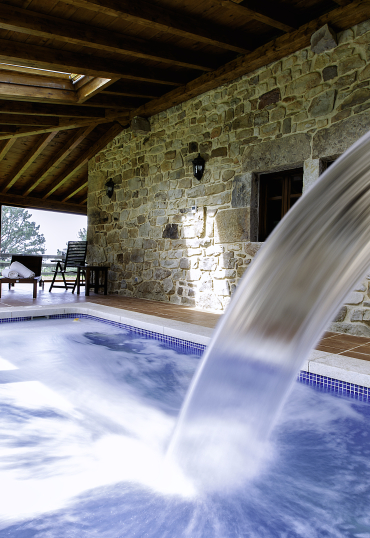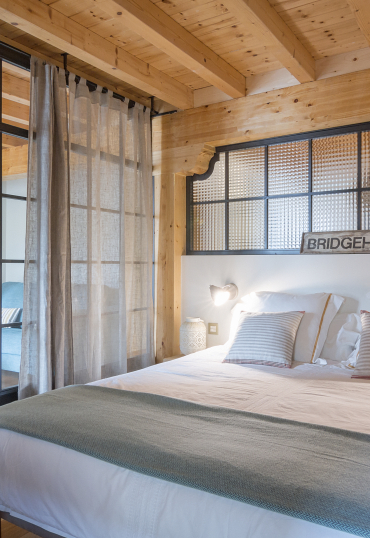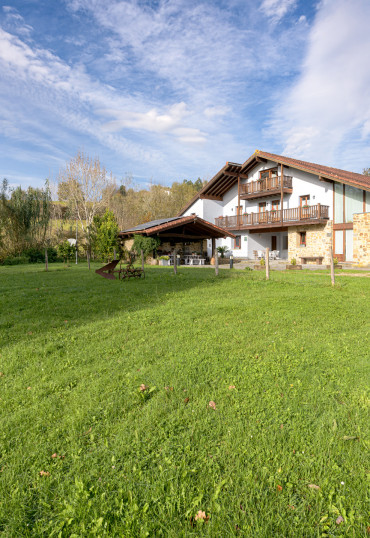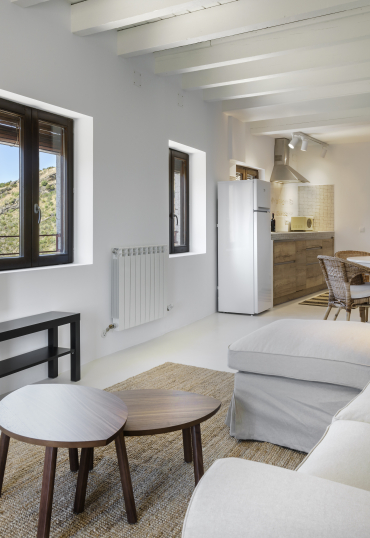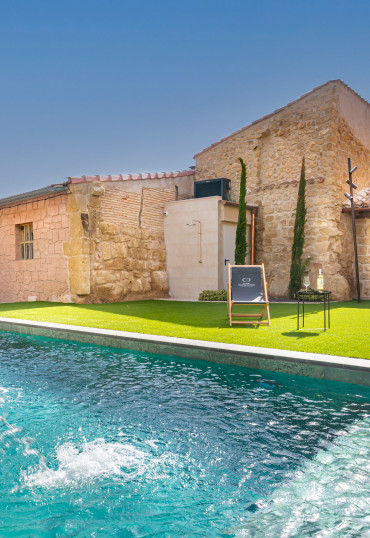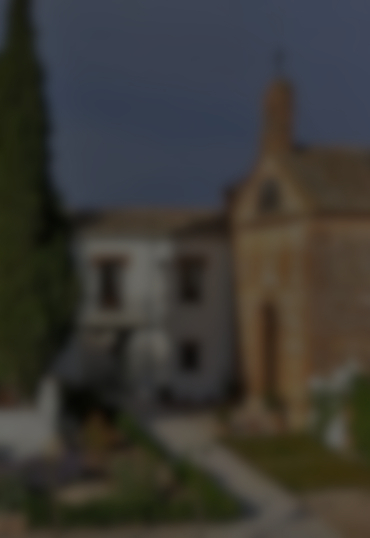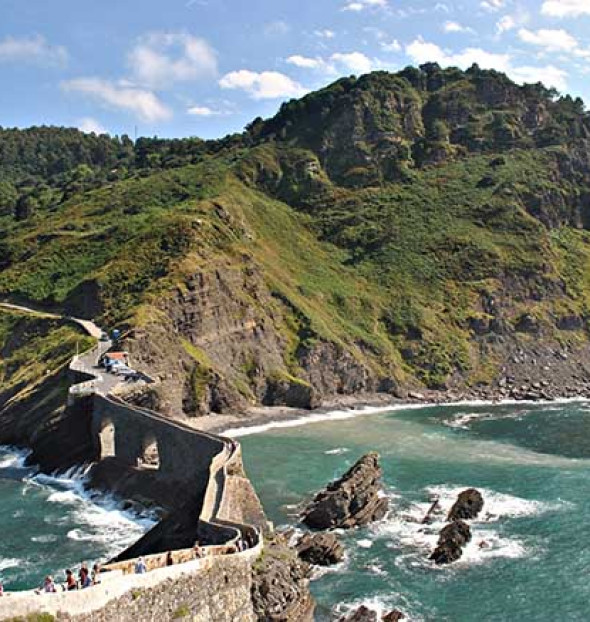Full rental houses and apartments near Bilbao
Found 7 accommodations
Rusticae, the leading boutique hotel selection club in Spain, recommends the best full rental rural houses and apartments near Bilbao so that you can enjoy yourself in the company of your loved ones.
- What kind of accommodation are you looking for?
- HOTELS ONLY
- SELF-CATERING ONLY
- APARTMENTS ONLY
- SHOW ALL
ENJOY AT
UNIQUE PROPERTIES
SELECTED BY
RUSTICAE
BOUTIQUE HOTELS
FULL RENTAL HOUSES AND APARTMENTS NEAR BILBAO RUSTICAE
Full rental houses and apartments near Bilbao: the perfect excuse to visit the great museums of the Basque Country
The full rental houses and apartments near Bilbao that are part of Rusticae, offer the traveler the perfect excuse to get to know the pulsating city that is located on the banks of the Nervión. for We propose a tour of the two most important museums, not only in the city, but throughout the Basque Country.
GUGGENHEIM MUSEUM
The Guggenheim Museum Bilbao is the work of Canadian-American architect Frank Gehry and represents a magnificent example of the most avant-garde architecture of the 20th century. With a surface area of 24,000 m2, of which 9,000 m2 are intended for exhibition space, the building represents an architectural landmark due to its bold configuration and innovative design, forming a seductive backdrop for the art that is exhibited in it.
Together, Gehry's design creates a spectacular and sculptural structure perfectly integrated into the urban fabric of Bilbao and its surroundings.
An area of recent urbanization
The Museum is surrounded by attractive promenades and squares in an area of recent urbanization, its industrial past surpassed. The square and the main entrance of the Museum are found along Iparragirre street, one of the main roads that crosses Bilbao diagonally, extending the urban area to the very door of the Museum. Once in the square, the visitor accesses the Vestibule descending a wide staircase, an infrequent resource that, in this case, correctly solves the difference in elevation between the Nervión estuary, on whose bank the Museum is located, and the level of the city, making possible a spectacular structure that, however, does not exceed the height of the surrounding buildings. The highest part of the building is crowned by a large skylight in the shape of a metallic flower that covers the Atrium, one of the most characteristic features of the building.
The exterior of the Museum, whose perimeter can be covered in its entirety, presents different configurations from different perspectives and also serves for the artistic exhibition, housing pieces by creators such as Louise Bourgeois, Eduardo Chillida, Yves Klein, Jeff Koons or Fujiko Nakaya. The plot on which the building is located is crossed at one end by the La Salve Bridge which, since 2007, serves as a support for the sculptural intervention commissioned by the Museum from Daniel Buren entitled Red Arches / Arku Gorriak. Under the bridge runs room 104, a huge column-free gallery that houses Richard Serra's sculptural installation The Matter of Time, and which runs into a tower at its end, a sculptural culmination of the architectural design that embraces the colossal bridge and integrates it, effectively, in the building.
A large open space with curved volumes
Once in the Lobby, which serves as a distributor, the visitor enters the Atrium, the true heart of the Museum and one of the distinctive features of Frank Gehry's architectural design. It is a large open space with curved volumes that connect the interior and exterior of the building through large glass curtain walls and a large overhead skylight. The three levels of the Museum are organized around this central Atrium and are connected by curvilinear walkways, titanium and glass elevators, and stair towers. The Atrium, which also functions as an exhibition space, serves as the axis that orders the 20 galleries that the Museum houses, some with a more classic appearance and orthogonal lines and others with more organic and irregular volumes. The interplay of volumes and perspectives makes it possible to have interior spaces in which, however, the visitor does not feel at all overwhelmed.
This diversity of rooms has demonstrated its enormous versatility in the expert hands of curators and designers, who have found the ideal atmosphere, both for presentations of large-format works and contemporary media, as well as in exhibitions of a more relaxed or intimate nature.
< br> A structure of titanium, glass and limestone
The construction of the Guggenheim Museum Bilbao took place between October 1993 and October 1997 and the chosen location, on a curve of an old dock for port and industrial use, involved the recovery of the Nervión estuary for the city and its redevelopment for the culture and leisure.
Due to the mathematical complexity of the curvilinear shapes projected by Gehry, he decided to use an advanced software initially used in the aerospace industry, CATIA, to faithfully transfer his concept to the structure and facilitate its construction. For the exterior skin of the building, the architect chose titanium after discarding other materials and checking its behavior in samples that were outside his own studio. The finish of the nearly 33,000 very fine titanium plates achieves a rough and organic effect, to which are added the changes in the tonality of the material depending on the prevailing atmosphere. The other two materials used in the building, limestone and glass, harmonize perfectly, achieving an architectural design of great visual impact, today it has become a true icon of the city throughout the world.
Texts: Guggenheim Bilbao Museoa.
MUSEUM OF FINE ARTS
The origin of the current museum is located in the first Museum of Fine Arts, founded in 1908 and which opened in 1914, and in the Modern Art Museum, inaugurated in 1924. Both institutions and their respective collections were effectively united in 1945, the year in which the old building was built. In 1970 the modern building was added, and in 2001 a major renovation ended up giving the museum its current appearance. In 2008, and under the slogan "100 years of history, 10 centuries of art", the Bilbao Fine Arts Museum celebrated its first centenary.
Throughout its history, the museum has developed an exemplary model in which citizens, the local artistic community and public institutions have determined its configuration and growth, through important purchases and donations of works of art that have structured the main nuclei of the collection and their subsequent growth.
Personality
Already in the beginning, some of the characteristics of the art gallery were manifested that still remain in force today, such as the close link between public institutions and society, coinciding in the desire to turn Bilbao into a cultural reference. The important donations and legacies that the museum received from institutions and individuals in its first years of activity determined the future growth lines of the collection.
Another characteristic of the museum is its desire for contemporaneity which, in those first moments, responded to the concerns of the artistic community. This commitment to the present materialized ten years later in the creation of a new museum dedicated to modern and contemporary art. Thus, the Museum of Modern Art, located in a dependency of the Provincial Council, opened its doors in 1924 and was directed by the painter Aurelio Arteta.
Brief history
Shortly after the Civil War ended, it was decided to build a new building to house the collections of both museums gathered in the same institution that, for years, was called the Museum of Fine Arts and Modern Art of Bilbao.
The new neoclassical building was built in the modern Ensanche of the city, according to the project of the architects Fernando Urrutia and Gonzalo Cárdenas. The current Museum of Fine Arts in Bilbao was inaugurated in 1945. The direction was in charge of Manuel Losada until 1949, Crisanto de Lasterra until 1973 and Javier de Bengoechea until 1982.
However, this first space soon proved insufficient, so, at the beginning of the sixties, it was decided to commission its extension to the architects Álvaro Líbano and Ricardo Beascoa, who carried out an innovative work that reflects the influence of the modern movement and , more specifically, of the architecture of Mies van der Rohe. The works concluded in 1970 although, ten years later and under the direction of Jorge de Barandiarán, new spaces and services were fitted out in the basements of the building. In 1991 the Basque Government became part of the museum, joining the Bilbao City Council and the Provincial Council of Bizkaia.
In 1996, and under the direction of Miguel Zugaza, a competition was called for the award of a plan to reform and expand the museum, with the aim of modernizing facilities and services. That same year, a jury was set up, in which the architects Rafael Moneo, Norman Foster and Álvaro Líbano participated, among others, to assess the nineteen preliminary projects submitted to the competition. After examining the proposals, the team headed by Luis Uriarte and made up of Borja Arana, José Ramón Foraster and Borja Pagazaurtundua was commissioned.
The program of needs proposed to improve the horizontal and vertical communication between the two buildings that make up the museum through a new link and a new gallery. Also, free up a series of spaces to gather and optimize services (reception, cafeteria, restaurant, store-bookstore, library, didactic department and auditorium) and expand the exhibition spaces. Similarly, the convenience of a change in access to the museum was considered, integrating it into the axis that connects the city center with Abandoibarra. Finally, the reform and relocation of the offices was recommended, as well as the air conditioning of the old building. The set of these works supposed an approximate extension of the surface of 6,450 m2 and an intervention on 14,250 m2. The global investment was 15 million euros, financed by the institutions that are part of the museum: the Basque Government, the Provincial Council of Bizkaia and the Bilbao City Council. After the completion of the renovation and expansion works, the museum reopened its facilities on November 10, 2001.
Texts: Bilbao Fine Arts Museum
The full rental houses and apartments near Bilbao that Rusticae has, are the perfect starting point to get to the city and discover these two fascinating museums and the cosmopolitan and modern city that is Bilbao. for
The full rental houses and apartments near Bilbao that are part of Rusticae, offer the traveler the perfect excuse to get to know the pulsating city that is located on the banks of the Nervión. for We propose a tour of the two most important museums, not only in the city, but throughout the Basque Country.
GUGGENHEIM MUSEUM
The Guggenheim Museum Bilbao is the work of Canadian-American architect Frank Gehry and represents a magnificent example of the most avant-garde architecture of the 20th century. With a surface area of 24,000 m2, of which 9,000 m2 are intended for exhibition space, the building represents an architectural landmark due to its bold configuration and innovative design, forming a seductive backdrop for the art that is exhibited in it.
Together, Gehry's design creates a spectacular and sculptural structure perfectly integrated into the urban fabric of Bilbao and its surroundings.
An area of recent urbanization
The Museum is surrounded by attractive promenades and squares in an area of recent urbanization, its industrial past surpassed. The square and the main entrance of the Museum are found along Iparragirre street, one of the main roads that crosses Bilbao diagonally, extending the urban area to the very door of the Museum. Once in the square, the visitor accesses the Vestibule descending a wide staircase, an infrequent resource that, in this case, correctly solves the difference in elevation between the Nervión estuary, on whose bank the Museum is located, and the level of the city, making possible a spectacular structure that, however, does not exceed the height of the surrounding buildings. The highest part of the building is crowned by a large skylight in the shape of a metallic flower that covers the Atrium, one of the most characteristic features of the building.
The exterior of the Museum, whose perimeter can be covered in its entirety, presents different configurations from different perspectives and also serves for the artistic exhibition, housing pieces by creators such as Louise Bourgeois, Eduardo Chillida, Yves Klein, Jeff Koons or Fujiko Nakaya. The plot on which the building is located is crossed at one end by the La Salve Bridge which, since 2007, serves as a support for the sculptural intervention commissioned by the Museum from Daniel Buren entitled Red Arches / Arku Gorriak. Under the bridge runs room 104, a huge column-free gallery that houses Richard Serra's sculptural installation The Matter of Time, and which runs into a tower at its end, a sculptural culmination of the architectural design that embraces the colossal bridge and integrates it, effectively, in the building.
A large open space with curved volumes
Once in the Lobby, which serves as a distributor, the visitor enters the Atrium, the true heart of the Museum and one of the distinctive features of Frank Gehry's architectural design. It is a large open space with curved volumes that connect the interior and exterior of the building through large glass curtain walls and a large overhead skylight. The three levels of the Museum are organized around this central Atrium and are connected by curvilinear walkways, titanium and glass elevators, and stair towers. The Atrium, which also functions as an exhibition space, serves as the axis that orders the 20 galleries that the Museum houses, some with a more classic appearance and orthogonal lines and others with more organic and irregular volumes. The interplay of volumes and perspectives makes it possible to have interior spaces in which, however, the visitor does not feel at all overwhelmed.
This diversity of rooms has demonstrated its enormous versatility in the expert hands of curators and designers, who have found the ideal atmosphere, both for presentations of large-format works and contemporary media, as well as in exhibitions of a more relaxed or intimate nature.
< br> A structure of titanium, glass and limestone
The construction of the Guggenheim Museum Bilbao took place between October 1993 and October 1997 and the chosen location, on a curve of an old dock for port and industrial use, involved the recovery of the Nervión estuary for the city and its redevelopment for the culture and leisure.
Due to the mathematical complexity of the curvilinear shapes projected by Gehry, he decided to use an advanced software initially used in the aerospace industry, CATIA, to faithfully transfer his concept to the structure and facilitate its construction. For the exterior skin of the building, the architect chose titanium after discarding other materials and checking its behavior in samples that were outside his own studio. The finish of the nearly 33,000 very fine titanium plates achieves a rough and organic effect, to which are added the changes in the tonality of the material depending on the prevailing atmosphere. The other two materials used in the building, limestone and glass, harmonize perfectly, achieving an architectural design of great visual impact, today it has become a true icon of the city throughout the world.
Texts: Guggenheim Bilbao Museoa.
MUSEUM OF FINE ARTS
The origin of the current museum is located in the first Museum of Fine Arts, founded in 1908 and which opened in 1914, and in the Modern Art Museum, inaugurated in 1924. Both institutions and their respective collections were effectively united in 1945, the year in which the old building was built. In 1970 the modern building was added, and in 2001 a major renovation ended up giving the museum its current appearance. In 2008, and under the slogan "100 years of history, 10 centuries of art", the Bilbao Fine Arts Museum celebrated its first centenary.
Throughout its history, the museum has developed an exemplary model in which citizens, the local artistic community and public institutions have determined its configuration and growth, through important purchases and donations of works of art that have structured the main nuclei of the collection and their subsequent growth.
Personality
Already in the beginning, some of the characteristics of the art gallery were manifested that still remain in force today, such as the close link between public institutions and society, coinciding in the desire to turn Bilbao into a cultural reference. The important donations and legacies that the museum received from institutions and individuals in its first years of activity determined the future growth lines of the collection.
Another characteristic of the museum is its desire for contemporaneity which, in those first moments, responded to the concerns of the artistic community. This commitment to the present materialized ten years later in the creation of a new museum dedicated to modern and contemporary art. Thus, the Museum of Modern Art, located in a dependency of the Provincial Council, opened its doors in 1924 and was directed by the painter Aurelio Arteta.
Brief history
Shortly after the Civil War ended, it was decided to build a new building to house the collections of both museums gathered in the same institution that, for years, was called the Museum of Fine Arts and Modern Art of Bilbao.
The new neoclassical building was built in the modern Ensanche of the city, according to the project of the architects Fernando Urrutia and Gonzalo Cárdenas. The current Museum of Fine Arts in Bilbao was inaugurated in 1945. The direction was in charge of Manuel Losada until 1949, Crisanto de Lasterra until 1973 and Javier de Bengoechea until 1982.
However, this first space soon proved insufficient, so, at the beginning of the sixties, it was decided to commission its extension to the architects Álvaro Líbano and Ricardo Beascoa, who carried out an innovative work that reflects the influence of the modern movement and , more specifically, of the architecture of Mies van der Rohe. The works concluded in 1970 although, ten years later and under the direction of Jorge de Barandiarán, new spaces and services were fitted out in the basements of the building. In 1991 the Basque Government became part of the museum, joining the Bilbao City Council and the Provincial Council of Bizkaia.
In 1996, and under the direction of Miguel Zugaza, a competition was called for the award of a plan to reform and expand the museum, with the aim of modernizing facilities and services. That same year, a jury was set up, in which the architects Rafael Moneo, Norman Foster and Álvaro Líbano participated, among others, to assess the nineteen preliminary projects submitted to the competition. After examining the proposals, the team headed by Luis Uriarte and made up of Borja Arana, José Ramón Foraster and Borja Pagazaurtundua was commissioned.
The program of needs proposed to improve the horizontal and vertical communication between the two buildings that make up the museum through a new link and a new gallery. Also, free up a series of spaces to gather and optimize services (reception, cafeteria, restaurant, store-bookstore, library, didactic department and auditorium) and expand the exhibition spaces. Similarly, the convenience of a change in access to the museum was considered, integrating it into the axis that connects the city center with Abandoibarra. Finally, the reform and relocation of the offices was recommended, as well as the air conditioning of the old building. The set of these works supposed an approximate extension of the surface of 6,450 m2 and an intervention on 14,250 m2. The global investment was 15 million euros, financed by the institutions that are part of the museum: the Basque Government, the Provincial Council of Bizkaia and the Bilbao City Council. After the completion of the renovation and expansion works, the museum reopened its facilities on November 10, 2001.
Texts: Bilbao Fine Arts Museum
The full rental houses and apartments near Bilbao that Rusticae has, are the perfect starting point to get to the city and discover these two fascinating museums and the cosmopolitan and modern city that is Bilbao. for
